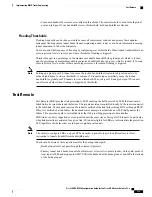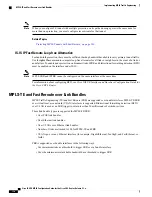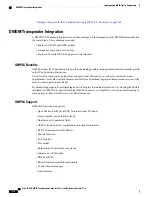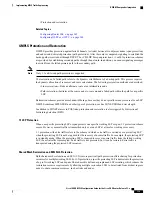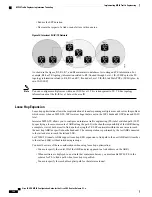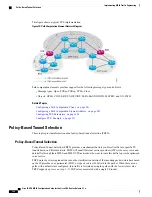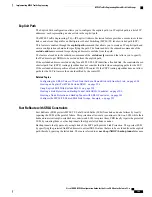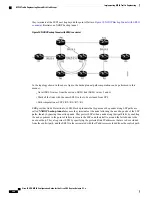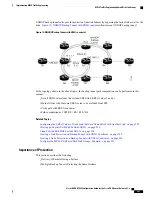
This figure illustrates a PBTS implementation.
Figure 16: Policy-Based Tunnel Selection Implementation
Related Topics
Configuring Policy-based Tunnel Selection, on page 286
Configure Policy-based Tunnel Selection: Example, on page 351
Policy-Based Tunnel Selection Functions
The following PBTS functions are supported:
•
IPv4 traffic arrives unlabeled on the VRF interface and the non-VRF interface.
•
MPLS traffic is supported on the VRF interface and the non-VRF interface.
•
Load balancing across multiple TE tunnels with the same traffic class attribute is supported.
•
Selected TE tunnels are used to service the lowest tunnel class as default tunnels.
•
LDP over TE tunnel and single-hop TE tunnel are supported.
•
Both Interior Gateway Protocol (IGP) and Label Distribution Protocol (LDP) paths are used as the
default path for all traffic that belongs to a class that is not configured on the TE tunnels.
•
According to the quality-of-service (QoS) policy, tunnel selection is based on the outgoing experimental
(EXP) value and the remarked EXP value.
•
L2VPN preferred path selection lets traffic be directed to a particular TE tunnel.
•
IPv6 traffic for both 6VPE and 6PE scenarios are supported.
Related Topics
Configuring Policy-based Tunnel Selection, on page 286
Configure Policy-based Tunnel Selection: Example, on page 351
PBTS Restrictions
When implementing PBTS, the following restrictions are listed:
Cisco IOS XR MPLS Configuration Guide for the Cisco CRS Router, Release 5.1.x
187
Implementing MPLS Traffic Engineering
Policy-Based Tunnel Selection



